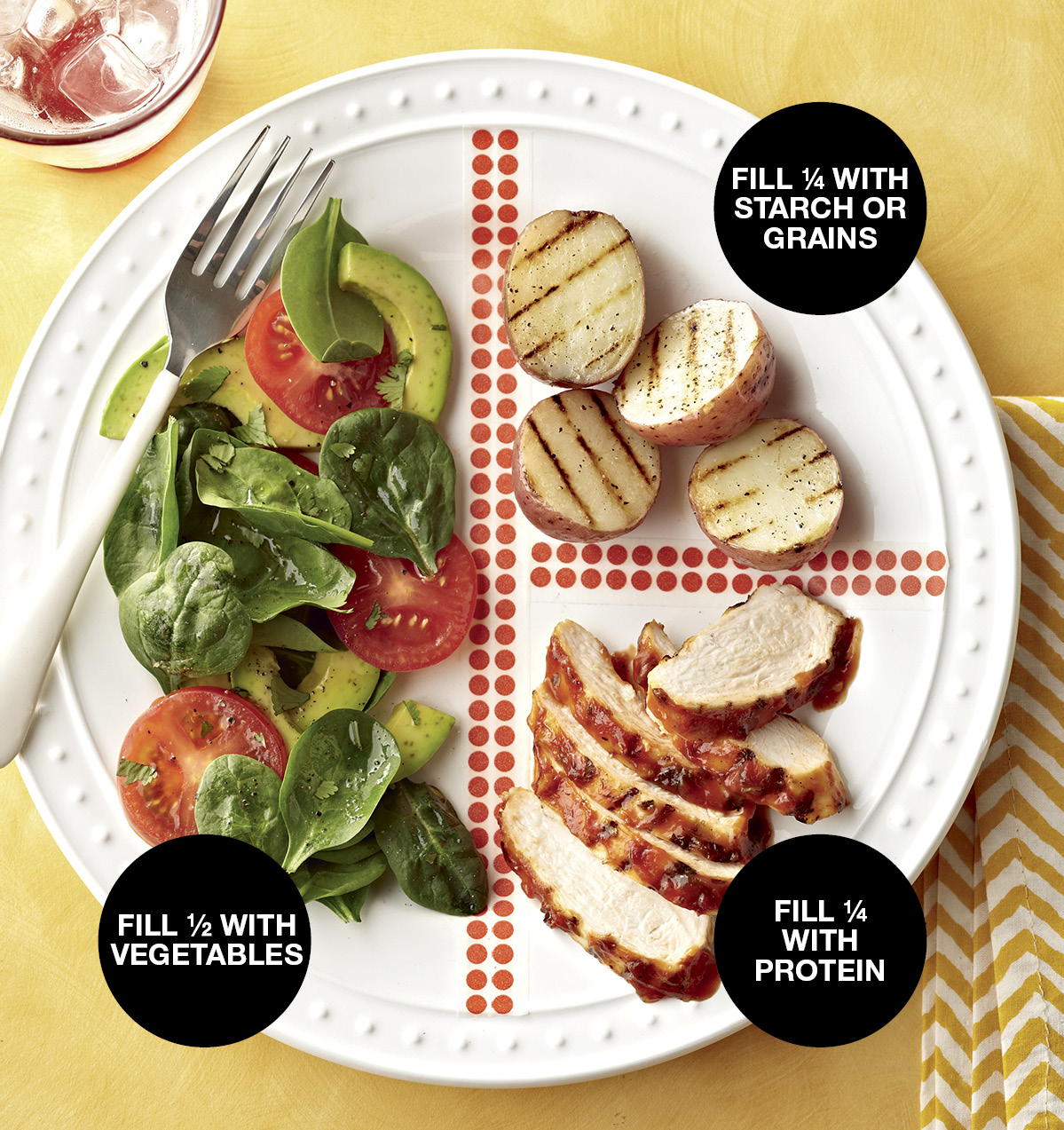assembling a mindful plate
Be more mindful of what you eat from purchase to plate.
With the convenience of grocery delivery and frozen meals, it is easy to become rather disconnected from your food. When was the last time you thought about where your food came from (beyond the grocery aisle)?
Food terms like “organic,” “sustainable,” and “locavorism” seem trendy, but behind the catchphrases lurk some concepts that lead to more mindful, healthful eating. Whether it’s growing your own vegetables or strolling the local farmers market for seasonal produce, you have plenty of opportunities to gain a better understanding of where your food comes from. The next time you have an apple in your hand, pause and think about all the people it took to get that apple to your local grocer. When buying produce or meat, ask yourself questions such as How was this grown? Where did it come from? How was this animal raised? Asking these questions will help you build a deeper appreciation for your food. You may even notice your grocery cart will begin to look different.
Then start cooking! Make it fun by trying new recipes. Not the cook in your household? Take time to appreciate the hard work your loved one put into making a meal. Ask about the process and ingredients.
Expressing gratitude toward your food and all the people who helped get it on your plate may just change your attitude toward eating, creating a more mindful, enjoyable experience.
Arrange Your Plate
Get your eating on track with the Plate Method. This visual guide gives you built-in portion control that helps you easily compose healthful, balanced meals for better blood glucose control and weight management.
We tend to eat what’s in front of us. So portion control is easier when you start with a smaller dish. We recommend a 9-inch plate. If your dinnerware is larger, fill just inside the rim. A shallow-rimmed bowl is also a good option as long as it’s 9 inches wide.
Divide your plate into sections and fill it as follows:
½ Nonstarchy Vegetables Fill half your plate with raw or cooked vegetables such as broccoli, green beans, cauliflower, cucumber, peppers, salad greens, asparagus, zucchini, and tomatoes. You’ll get plenty of nutrients without spiking your blood sugar.
¼ Protein Choose a lean meat, like poultry, lean beef, fish, or pork, or a nonmeat protein such as tofu, eggs, cheese, or nuts. If you carb count, track the amount of carbohydrate in vegetable proteins such as beans and lentils, too. If carb counting isn’t your strategy, that’s OK. You can build a balanced plate without tallying each gram of carbohydrate.
¼ Starch or Grains Choose a serving of bread, tortilla, pasta, rice, beans, or starchy vegetable, such as potatoes, corn, or peas. Choose whole grains and beans to give meals a fiber boost.
On the Side As calorie and carb counts permit, add a serving of low-fat milk or yogurt and a side of fruit to your meal. Choose fresh, frozen, or canned fruit without added sugars.
Measure the Height
Avoid the trap of piling food too high on your plate—that defeats the purpose of creating a well-balanced meal. Nonstarchy vegetables should be the tallest section. Even if you’ve organized your plate correctly, extra calories and fats can sneak in if food is stacked too high. How high should it be? See What to Eat.
Calculate Combos
You don’t need a plate to implement the plate method. When cooking casseroles, soups, and chowders, think of each of the ingredients separately. For example, chili traditionally has meat, beans, tomatoes, onions, and peppers. These ingredients cover each aspect of the plate method. Consider that the greatest portion of food should be nonstarchy vegetables. The starchy portion and protein portion should each be about half the amount of veggies. For servings heavy in carbohydrate, such as tuna casserole and pasta dishes, remember that 1 cup accounts for about 30 grams of carb.
Go Easy on Extras
When using items like salad dressings, sauces, and spreads, choose lower-fat versions and keep the servings skimpy.
Choose Smart Sides
When dining out, don’t be afraid to ask for substitutions. For example, if grilled chicken breast comes with corn, mashed potatoes, and a dinner roll, which are all starches, ask to swap two of them for steamed or sautéed vegetables. Your blood sugar will thank you.
Make Fair Trades
When calculating fruit, milk, and starch servings, feel free to trade one for another. For example, if you want two pieces of bread for a sandwich, skip the milk or fruit that meal. The fruit, milk, or starch serving can also be traded for a cup of broth-based soup or even ½ cup low-fat ice cream for dessert.
